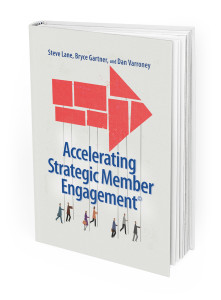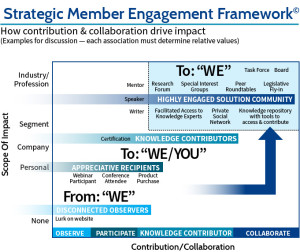 Does Your Association Outdistance For Profit Competition? At a time when for profit competitors pursue convention & conference space once owned by Associations, CEOs determined to thrive are reinvesting & sharpening their organizational competitive edge. In one case, PMMI www.pmmi.org, the Association for Packaging and Processing Technologies, an organization whose principal source of funding comes from trade shows, takes nothing for granted. According to Chuck Yuska, President & CEO, the board & staff team always compete to maintain their “Convening Authority” mantle.
Does Your Association Outdistance For Profit Competition? At a time when for profit competitors pursue convention & conference space once owned by Associations, CEOs determined to thrive are reinvesting & sharpening their organizational competitive edge. In one case, PMMI www.pmmi.org, the Association for Packaging and Processing Technologies, an organization whose principal source of funding comes from trade shows, takes nothing for granted. According to Chuck Yuska, President & CEO, the board & staff team always compete to maintain their “Convening Authority” mantle.
Strategic Partnership Emphasis
Securing market alignment is key for PMMI. Members & staff collaborate on annual goals, objectives, and measurements for the upcoming year.
Yuska emphasizes “we want to help our members be more competitive, give them the tools & information to grow their business, minimize their risks and obtain new business practices that help them become better companies and be more profitable.”
Address Member Pain Points
Successful Associations like PMMI remain connected with member pain points, & provide business tangible solutions to:
1. Help members succeed. Support member global market needs, produce trade shows & conferences that studiously link buyers & sellers, members, & their customers.
2. Use Customer Feedback Loop. Utilize exhibitor, member, & customer analytics & feedback to continuously improve takeaway value for all members & show participants.
3. Maintain High Relevance Factor. Accelerate organizational visibility through traditional & social media, direct mail, and industry channels.
4. Reinvest. Deliver the next “new thing,” and expand opportunities for members & customers.
Does Your Association Outdistance For Profit Competition?
 Despite $2 million net operating performance in 2012 & 2013, and 7% operating growth and 95% retention in 2013, PMMI looks to consistently enhance its competitive position.
Despite $2 million net operating performance in 2012 & 2013, and 7% operating growth and 95% retention in 2013, PMMI looks to consistently enhance its competitive position.
What’s next for PMMI? Expansion into regional trade shows with Pack Expo East www.packexpoeast.com.
For a free copy of the “Accelerating Strategic Member Engagement” eBook, request your copy at www.potomaccore.com.







 Members care about
Members care about 






